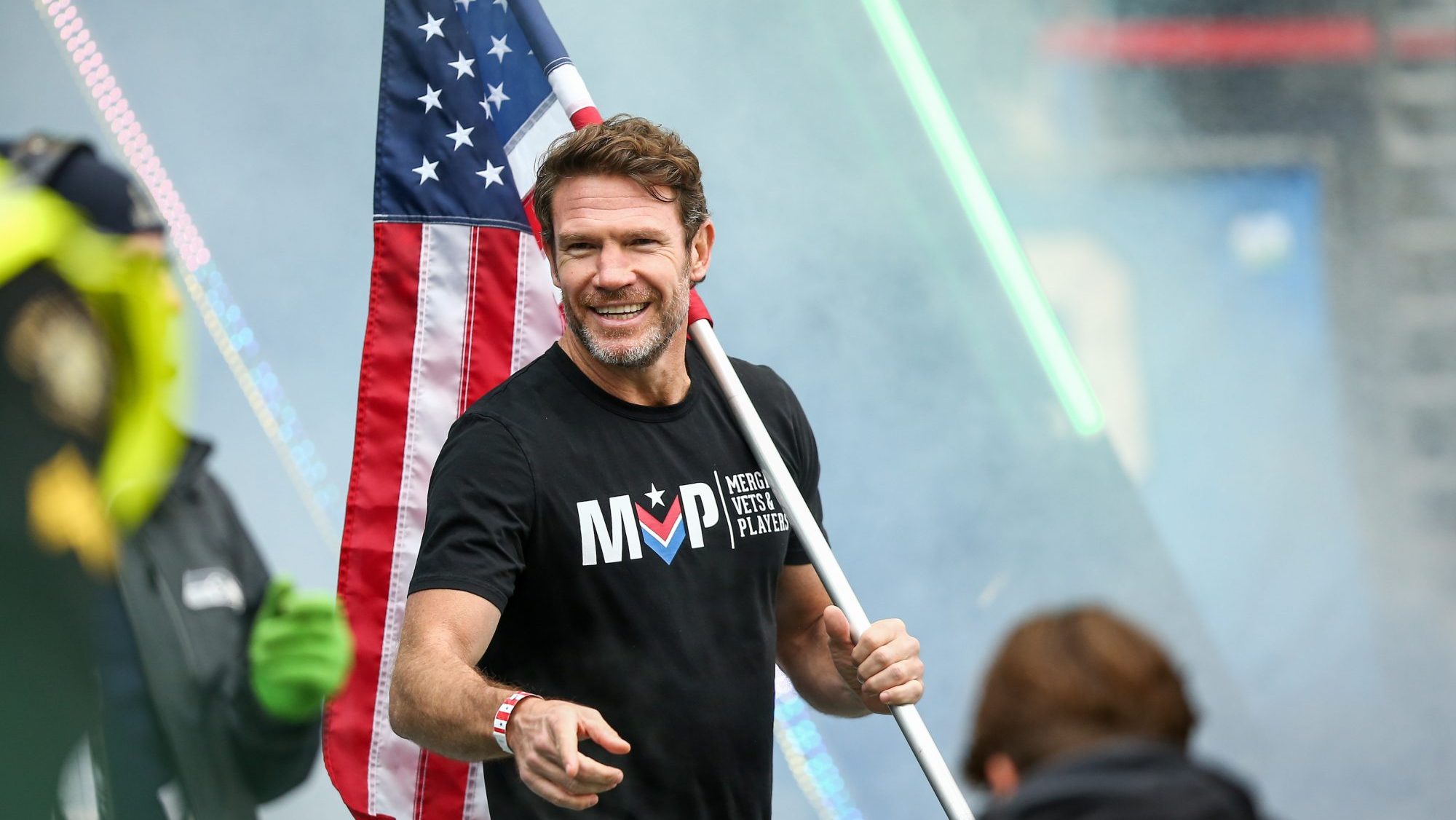

Transitioning out of the military can lead to feelings of disconnect and lost identity — and this can be true for professional athletes as well, said former Green Beret turned NFL player Nate Boyer.
In 2015, Boyer started MVP: Merging Vets and Players which helps retired sports players and veterans enter their next phase of life.
Both former service members and professional athletes face challenges during this transition, Boyer said. While their day-to-day looks vastly different, the sports and military environments foster the same love for and reliance on teamwork.
“Going to work on the battlefield, the ball field, different places, but the camaraderie, structure, the attachment to a uniform, the identity that comes with that is very similar,” told Task & Purpose at a media event ahead of the Army-Navy game, just outside of Washington D.C.
“The number one thing when you ask vets and athletes what they missed, they always say, ‘I missed the guys. I missed the locker room,’ that part of it,” he said. “The career ending pretty young, 20s, 30s and feeling like you peaked and you’ll never be great again is also very hard.”
MVP’s mission is personal for Boyer, a former Green Beret and Texas Longhorns football player. He joined the Army in 2005, earned his Special Forces tab in December 2006 and went to Okinawa with the 1st Special Forces Group the following year. Boyer deployed with 10th Special Forces Group to Iraq, and served on tours in Afghanistan with the Special Operations Joint Task Force-Afghanistan and 3rd Special Forces Group. He also served on Joint Command Exchange Training missions to Israel, Bulgaria and Greece.
In both professions, the work is very physically demanding. For veterans and ex-NFL players, brain injuries are a common reality. Since 2000, more than half a million service members have been diagnosed with traumatic brain injuries, according to the Department of Defense. In a study published in September 2024, that included nearly 2,000 former NFL players, nearly one-third believed they have chronic traumatic encephalopathy, CTE, a brain disease linked to repeated head trauma.
Boyer said there is “a lot of crossover in these worlds,” with the physical head trauma that players and veterans experience during their careers. The worlds are so intertwined that the modern-day football helmets and aviator caps track their roots back to the U.S. Naval Academy. In 1893, midshipman Joseph M. Reeves wore a protective headgear set designed by a shoemaker after he was warned that one more blow to the head could cause “instant insanity.”
Beyond the lifelong physical impacts of professional sports and the military, the mental health challenges that come from head trauma or the lack of a mandated physical regimen is something Boyer and his organization also focus on.
“When you’re not sparked in that same way, personally, I believe other parts of you start to deteriorate as well. Your physical health is absolutely connected to your mental health,” Boyer said. “I think that’s something to really look at and focus on and understand that, yes, I may need to be treated for these injuries, but I also need to be challenged and pushed anyway.”
Boyer also said there are similarities when it comes to members of these two communities as they try to move into new career fields. For veterans, they had the idea of “it’s not you, it’s us” being drilled into them during basic training and the rest of their training focused on “the man on your left and right,” Boyer said.
By the time they get into the civilian world and apply for jobs, it can be difficult to translate those experiences to the world they’re heading into, or worse, they’ll see their military background boiled down to baseline technical skills and little more.
“In the Special Forces, we know we’re called the quiet professionals, but we’re not silent professionals,” he said. How do you understand that? How do you sort of wrap your brain around this idea that it’s okay to talk about some of that stuff?”
For sports players, Boyer said “it’s even harder to find where those skills may translate” because of preconceived notions about athletes being limited to physical greatness.
“Those are also human beings. That’s what they do as a profession,” he said. “They don’t only have football IQs.”
The latest on Task & Purpose
- A push to cut veterans disability benefits is gaining traction, experts warn
- A judge ordered the VA to build thousands of new veterans housing units in Los Angeles. An appeals court halted it
- Sailors on USS Carney recall tense night of combat in fierce Red Sea fight
- To build a runway for the new stealth bomber, the Air Force is moving 17 B-1s to a new base
- VFW bashes The Economist for taking ‘turkey-sized dump’ on disabled vets
